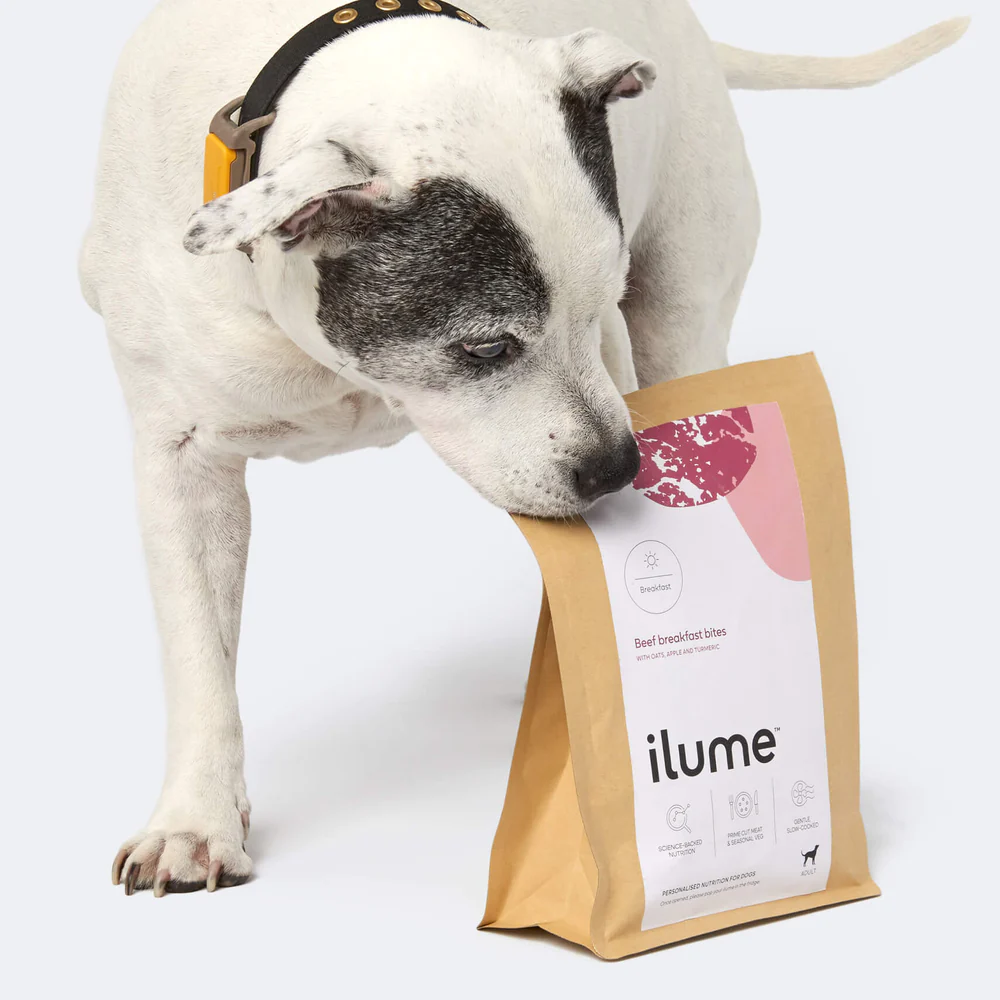Are dog treats really treats?
When you think of grabbing yourself a treat, you’re probably running for the chocolate stash – or nearest cheese platter with a French d’Affinois. If you ask Mum, she’d call these ‘sometimes foods’. So why are we so accustomed to treating our dogs every day?
Treats are often marketed as healthy
Research shows that giving your dog treats is all part of the bonding experience (1). Treats can help reinforce good behaviour and build trust. The problem is, overtreating, even with healthy treats, can lead to overfeeding and weight gain (2).
We often don’t take note that treats, rawhides and dental chews and even some supplements contain calories and may be contributing to weight gain in dogs (1).
In fact, when it comes to reducing calories for weight loss it’s reported that most dog owners considered vet advice, diet changes, a veterinary weight loss product, increase of exercise or attending an obesity clinic before they considered eliminating treats to help their dog lose weight (3).
A simple solution to avoid overfeeding when giving treats is to adjust your dog’s meals to account for the calories provided from treats. It’s recommended that 90% of calories come from complete and balanced meals and 10% from treats (4).

We analysed 120 brands of dog treats
When we started looking for quality dog treats, we analysed 120 brands and unfortunately, observed that most treats aren’t nutritious or healthy.
A large portion of them were filled with low-quality, high-carb and low-protein ingredients as well as artificial preservatives, colours and flavours.
More than half featured no calorie information
On top of poor quality ingredients, many of the treats featured no calorie information on the packaging as it’s not a labelling requirement in Australia.
Out of the 120 brands we analysed, only 45% included calories per 100g, and only 6% provided calorie-per-treat information.
This makes it impossible to understand how the treats affect your dog’s calorie intake.
Shopping for dog treats with label-reader eyes
For the label-readers amongst us, welcome. And even if you’re not one yet, the information below might help you become one.
THINGS TO AVOID
No calorie information
The lack of information makes it difficult for you to adjust your dog’s meals to account for the calories you’re feeding as treats.
High-carb ingredients
Look for your usual suspects: starch, flour, wheat, even sugar – especially when they’re the first ingredient on the list.
Anything artificial
Artificial flavours, colours and sweeteners. Preservatives and ‘E’ numbers. You’ll be surprised at what you find when you go digging.
THINGS YOU WANT TO SEE
Natural high-protein ingredients
Animal protein as the first ingredient and a protein percentage over 30% (as fed)..
Recognisable ingredients
If you know the ingredients and they come from whole foods, then you’re onto a good thing. A simple ingredient list is ideal.
Calories per treat
Just like our own ‘calories per serve’, this information is super important. It helps you weigh up exactly what you’re feeding.
Treat your dog to ilume
Confused by the calorie allowances for treats vs. meals? At ilume, we make it easier to follow calorie recommendations by adjusting the calories in your dog’s ilume meals as needed. Not just that, if you’re not sure of your dog’s 10% caloric allowance for treats, let us know and we’ll do the calculation for you.
Fresh dog food starts here: https://ilumefreshmeals.com.au/
Keep digging:
1. Linder, D., & Mueller, M., (2014). Pet obesity management: beyond nutrition. The Veterinary Clinics of North America. Small Animal Practice, 44(4), 789–806.
2. Bland, I. M., A. Guthrie-Jones, R. D. Taylor, and J. Hill. (2009). ‘Dog obesity: owner attitudes and behaviour’, Prev Vet Med, 92: 333-40.
3. Bland, I. M., Guthrie-Jones, A., Taylor, R. D., & Hill, J. (2010). Dog obesity: Veterinary practices’ and owners’ opinions on cause and management. Preventive Veterinary Medicine, 94(3–4), 310–315.
4. Morelli, Giada, Giorgio Marchesini, Barbara Contiero, Eleonora fusi, Marianne Diez, and Rebecca Ricci. 2019. ‘A Survey of Dog Owners’ Attitudes toward Treats’, Journal of Applied Animal Welfare Science.